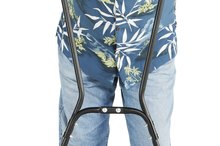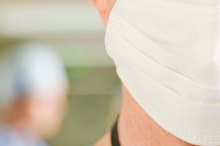The scientific name for lota skin disease is pinta which is derived from the Spanish meaning the painted or spotted one 4. It is no surprise then that Columbus’ ship, The Pinta, which left Spain’s harbor in August 1492 bound for the Americas, indicates the population scope that this disease affects: The Caribbean, South and Central America 4.
Symptoms of Lota
Blue, black, or light spots in dark-colored people of African descent and pink, red, or dark-brown blotches in fair-complexioned individuals are symptomatic of lota or pinta. The discolorations are non-malignant however they are likely to get wider as time passes and as the stages advance. One can have primary, secondary, or tertiary pinta with corresponding levels of gravity. In the early stage, a miniscule lesion can be detected on the legs after incubation and rapid proliferation, the leg regions can become covered. The disease attacks young children and those at the height of vulnerability are young children to 30 year old adults. In severe cases, disfiguration occurs.
- Blue, black, or light spots in dark-colored people of African descent and pink, red, or dark-brown blotches in fair-complexioned individuals are symptomatic of lota or pinta.
- In the early stage, a miniscule lesion can be detected on the legs after incubation and rapid proliferation, the leg regions can become covered.
Prevention against Lota
Foot and Leg Discoloration
Learn More
The lota disease is very contagious therefore skin contact should be avoided. Another prime carrier of lota is the insect. Insects transfer the disease and open the skin to receive the bacterium. With the infestation of mosquitoes and other insects in hot climates, lota is apt to be widely transmitted. In such a case, insecticides, mosquito repellants, or vaccinations are viable preventative measures against lota. Sometimes improper hygiene occasions and spreads lota hence a good clean up should minimize if not solve the issue.
- The lota disease is very contagious therefore skin contact should be avoided.
- Sometimes improper hygiene occasions and spreads lota hence a good clean up should minimize if not solve the issue.
Treatment
The prescribed treatment for lota is benzathine penicillin, erythromycin antibiotics, and tetracycline antibiotics. Dosages of those medicines can turn around conditions in a matter of 24 hours. Certain soaps containing these ingredients are also remedial to getting rid of the spots.
Other Related Skin Diseases
List of Pandemic Diseases
Learn More
Other diseases which produce the same symptoms of lota are syphilis and tinea versicolor. Skin discoloration, itching, and lesions are common dermal conditions which come along with these previously mentioned diseases. The reason for the striking similarities lies in the root cause, the treponema pallidum bacterium, which provokes the venereal disease, syphilis. Yaws and bejel are other skin disorders for which this bacterium is responsible. Tinea versicolor provokes discolored yeast-infected spots on the face, back, chest, arms, and neck. The prevalence is also in tropical, torrid climates.
- Other diseases which produce the same symptoms of lota are syphilis and tinea versicolor.
- Skin discoloration, itching, and lesions are common dermal conditions which come along with these previously mentioned diseases.
The time and place of lota
Lota is more focused in the rural and poverty-stricken regions of South American and Central American countries. Currently there is no threat of pinta infections in the United States. From teh 1950s to the 1980s lota infections were more rampant however, the incidences have decreased dramatically due to education and vaccinations.
- Lota is more focused in the rural and poverty-stricken regions of South American and Central American countries.
Related Articles
References
Writer Bio
Annmicha Blugh has done extensive work for four years in the research and composition of several articles and papers in alignment with diverse themes. Working for Morgan State University "Spokesman" paper has opened the door to journalism and freelance writing. She is qualified with a Bachelor of Arts in English language and literature.









